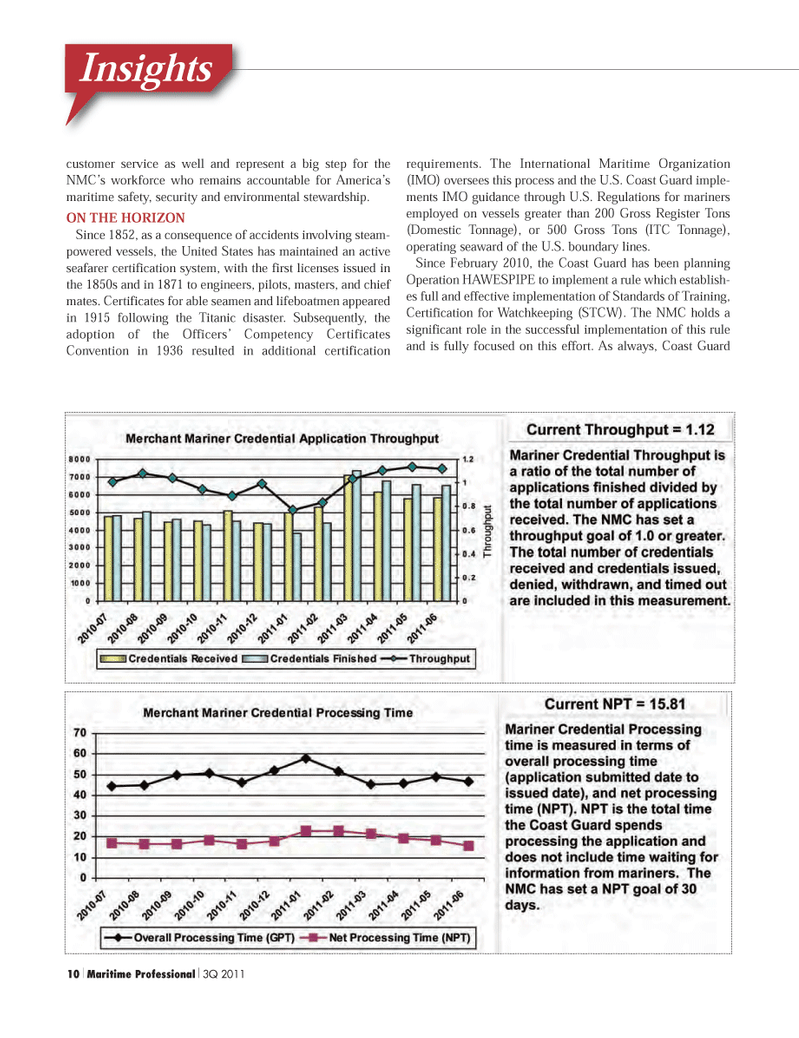
Page 10: of Maritime Logistics Professional Magazine (Q3 2011)
Maritime Security / Maritime Training & Education
Read this page in Pdf, Flash or Html5 edition of Q3 2011 Maritime Logistics Professional Magazine
10 Maritime Professional 3Q 2011customer service as well and represent a big step for theNMC?s workforce who remains accountable for America?s maritime safety, security and environmental stewardship. ON THE HORIZON Since 1852, as a consequence of accidents involving steam- powered vessels, the United States has maintained an active seafarer certification system, with the first licenses issued in the 1850s and in 1871 to engineers, pilots, masters, and chiefmates. Certificates for able seamen and lifeboatmen appeared in 1915 following the Titanic disaster. Subsequently, the adoption of the Officers? Competency Certificates Convention in 1936 resulted in additional certification requirements. The International Maritime Organization (IMO) oversees this process and the U.S. Coast Guard imple- ments IMO guidance through U.S. Regulations for mariners employed on vessels greater than 200 Gross Register Tons (Domestic Tonnage), or 500 Gross Tons (ITC Tonnage), operating seaward of the U.S. boundary lines. Since February 2010, the Coast Guard has been planningOperation HAWESPIPE to implement a rule which establish- es full and effective implementation of Standards of Training, Certification for Watchkeeping (STCW). The NMC holds a significant role in the successful implementation of this rule and is fully focused on this effort. As always, Coast Guard InsightsMP #3 (1-17):MP Layouts 8/17/2011 8:24 PM Page 10

 9
9

 11
11
